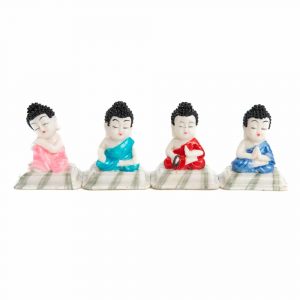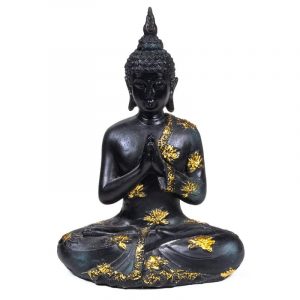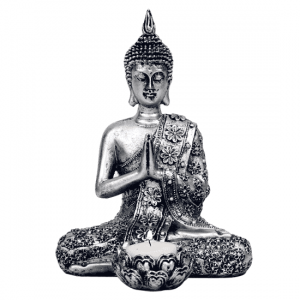


The praying Buddha is a representation of the founder of Buddhism, Gautama Buddha, who folds his hands in greeting or prayer. This figure is probably most common in Buddhism, because it is standard to place it at the entrance of temples and houses.
The Buddha that has his hands folded makes an Anjali Mudra, also called a Namaskara Mudra. With this stance, he conveys a very simple message: he welcomes or greets something or someone. This expression of kindness is intensified, because he presses his hands on his chest in front of his heart. According to Buddhists, this is the historical Buddha’s way of expressing the importance and worth of openness and humility to others.
There is a large variety of Buddha statues and they all have their own symbolic meanings. In addition to certain attributes, mudras are very important in conveying the Buddhist doctrine. These hand gestures are often depicted in holy statues:
With the dhyana, one hand rests on the other and the thumb and index touch as a symbol of knowledge. The dharmachakra mudra, too, expresses wisdom; Buddha forms a circle with both thumbs and index fingers in order to represent and set in motion the Buddhist doctrine. Abhaya mudras are recognisable by the palm of the hand that is turned upwards and outwards, and, to many people, this is Gautama representing the bravery to follow the spiritual path.
Are you interested in Buddhism? At Spiru, you can also buy a statue of a Thai Buddha, Japanese Buddha, Tara Buddha, medicine Buddha or sitting Buddha. We also have mini Buddha statues, which is a variant of the laughing or happy Buddha. Spiru is the right place to find the perfect spiritual statue!
© 2024 Spiru